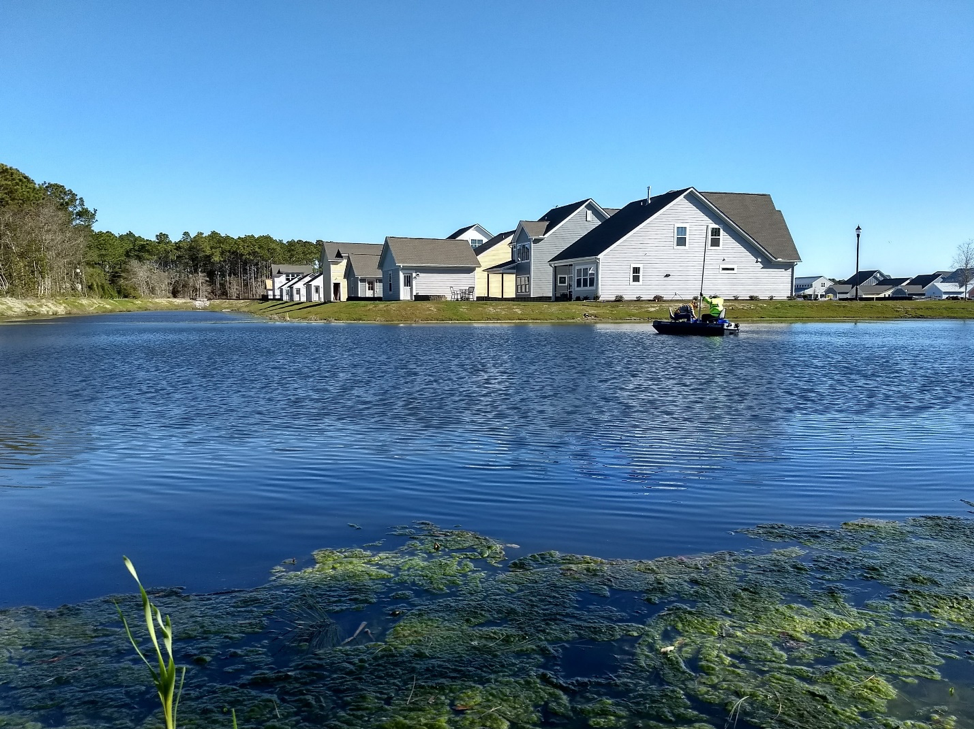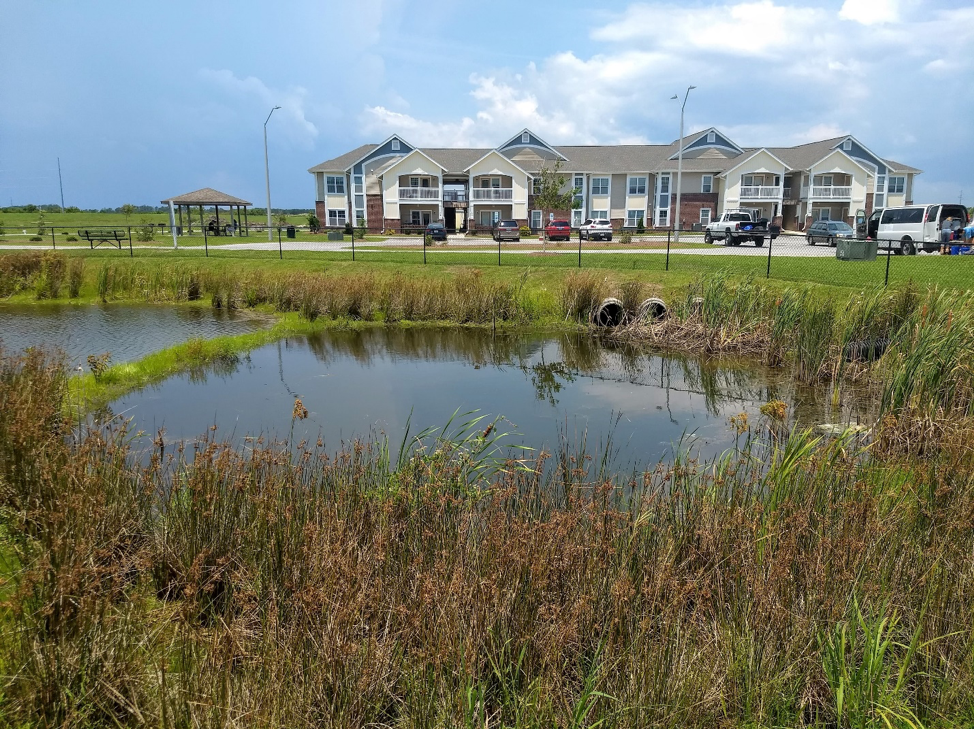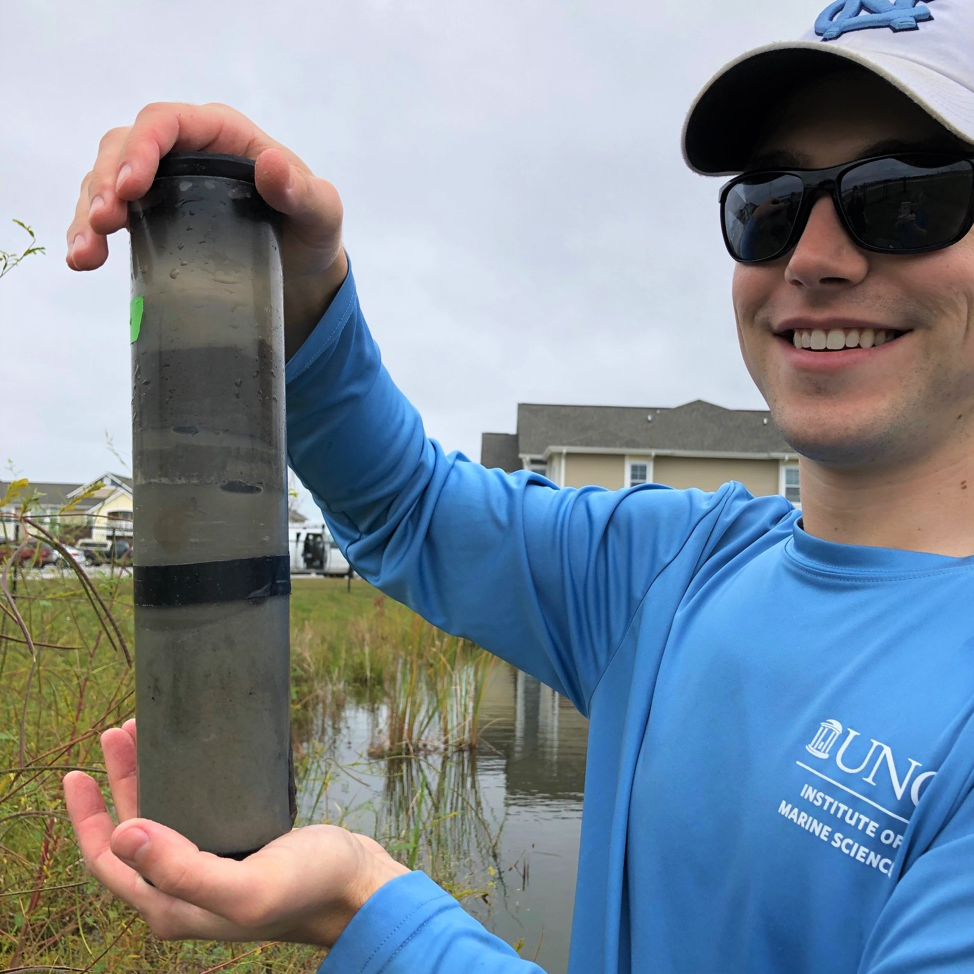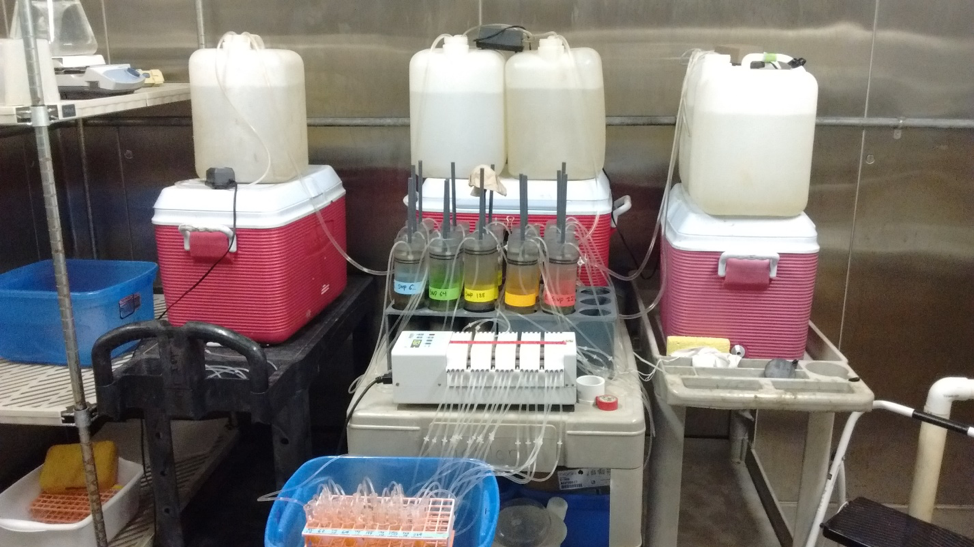Adam Gold is a Ph.D. candidate at the UNC Institute of Marine Sciences.
Tools of the Trade
I get a lot of questions from concerned residents while conducting my research, but then again, my research can seem pretty strange. Every couple of months, I’ll gather up all of the necessary field work supplies and throw it in the back of a truck. This list includes a miniature bass fishing boat, an oversized cooler, a ten-foot PVC pipe, and, of course, some race car exhaust tubing. No, my labmates and I are not about to go on a spearfishing expedition. Instead, we’re headed to three local stormwater ponds to take measurements and samples.

Stormwater Ponds are Intended to Enhance Water Quality
Everyone reading this blog post has seen a stormwater pond before, but you may not have recognized it. Stormwater ponds are large ponds that can be in residential neighborhoods or next to shopping centers, and they are engineered structures that collect and slowly drain stormwater runoff from developed areas when it rains. Stormwater ponds have been widely used over the past forty years and are promoted as structures that reduce the negative ecological impacts of stormwater.
If left untreated, stormwater runoff moves quickly from urban areas to streams during storms and washes away stream banks. Stormwater runoff also washes pollution into streams and waterbodies, and nutrient pollution from excess fertilizers or yard waste can fuel algal blooms that harm aquatic ecosystems and human health.

Taking a Closer Look at the Effectiveness of Stormwater Ponds
Even though stormwater ponds are extremely common, we still don’t know much about the processes within them that remove pollutants, such as excess nutrients. This is where my current research comes in. The main goal of my ongoing research is to characterize how stormwater ponds remove nutrients across seasons so we can better manage water quality now and in the future.
Back to the question everyone wants answered: What are you doing with that giant PVC pipe contraption? Well, once we arrive at our sampling site, we launch the miniature fishing boat in a stormwater pond and row to the middle. We launch an anchor and use the PVC contraption to grab a chunk of dirt from the bottom of the pond called a sediment core. After we collect three sediment cores and water samples from each of the study ponds, the samples are taken back to the UNC Institute of Marine Sciences (IMS).
Once at the lab, the samples are put into a climate-controlled room set to the ponds’ average water temperature when sampled, and various week-long tests are performed to measure gases and nutrients going into and out of the sediment cores. So far, these measurements have been conducted seven different times in three ponds, spanning a water temperature range from 52 – 88 degrees.


Initial Research Results Deliver Unexpected Findings
The results show that pond sediments generally removed large amounts of nutrients, but as temperatures increased, pond sediments recycled nutrients rather than removing them. This means that hotter temperatures limited the ability of ponds to remove nutrients and made algal blooms more likely to occur. So, while stormwater ponds may be good at retaining stormwater, they may not be the best way to remove nutrients and improve water quality during the summer. We found similar results in a previous study on Marine Corps Base Camp Lejeune measuring ponds of different ages during the summer.
The next step for this research is to find strategies that will make ponds work better during hot weather, such as using a fountain or aerator to mix the pond or altering water depth to make the pond shallower. There are also other structures to test that are collectively called “green infrastructure” that may work better than ponds at improving water quality.
While you may not have noticed the stormwater ponds in your town until now, they play a big role in mediating what flows into our streams and water bodies in the United States. Take a look at your neighborhood or town – where does your stormwater end up?
To learn more about this research or Adam’s other research projects focused on stream water quality and real-time water quality sensor networks, visit his website, follow him on Twitter (@acgold_04), or reach out to him via email.


